courtesy:https://www.indiadivine.org/srikurma...rtoise-avatar/
Srikurmam – The Unique Temple of Lord Kurma the Tortoise Avatar
The most sacred and ancient shrine of Sri Kurmam, situated on the shores of bay of bengal, is the only swayambhu temple in the world where lord vishnu is worshipped in the form of Kurma Avataara (tortoise – the second incarnation of the famous dasa avataras).
Initially dedicated to Shiva and referred to as Kurmeswara temple, Ramanuja is said to have converted Srikurmam into a Vaishnavite temple in the 11th century AD. Since then, the temple was regarded as an important centre of Vaishnavism. This ancient shrine is believed to be prior to the golden era of sri raama (raama raajyam).

Prominent references about this shrine are available in Kurma, Vishnu, Agni, Padma, Brahmaanda puranas. while the shrine is said to be more than a few million years old, outer structures were reconstructed many a time – after dilapidation of previous one , and the latest temple structure of outer walls is more than 700 years old.
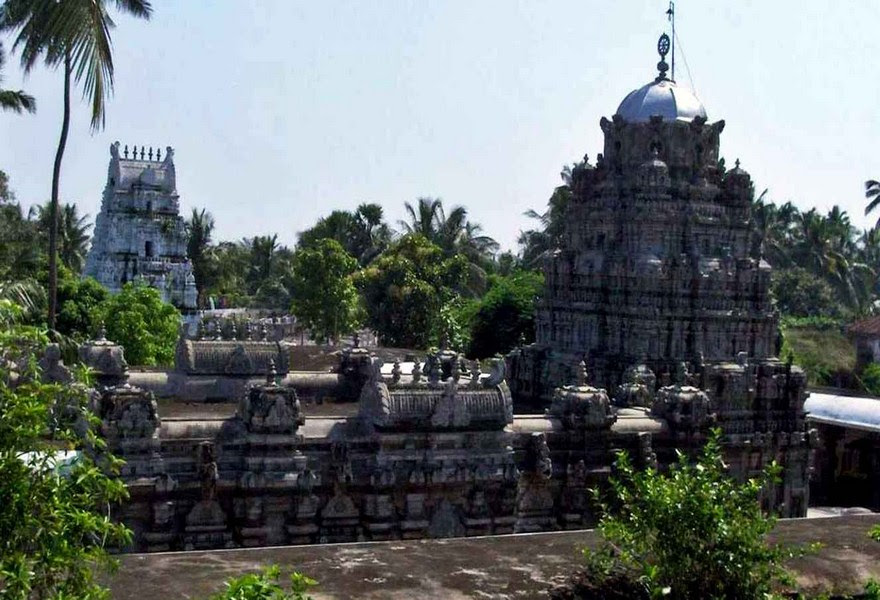
The legends runs as follows. There existed a mountain, Swetachala, which was ruled by the king Sutha. His wife being profoundly attached to the religious chores was to observe a vow (Vratham) on a Suddha Ekadasi day and shunned herself from the sensual pleasures. As the king made amorous advances to her on the very same day set for prayers and worship she reproached his advances and made a fervent appeal to Lord himself for the unhindered continuance of the Vratham which ought not be violated. In answer to her prayer, Lord Kurmanatha bade Ganges to flow in between the king and queen, thus segregating the couple and as a result the queen started living on the banks of the river, while the king was pining for his beloved in solitude. Sage Narada advised him to please Lord Vishnu by doing a penance at the confluence of river Vamsadhara and the sea. He taught Kurma-mantra to meditate upon. Pleased with his prayer, the Lord appeared before him with all his divine attributes such as Sanka, Chakra, Gadha and Padma. Lord Brahma, the creator of universe, himself officiated the celestial rituals and consecrated the shrine with gopaala yantra .

Sweta Pushkarini (the lake in front of the temple) is formed by the sudarshan chakra. sri mahaa laxmi (the consort of lord vishnu), emanated from this lake and is adored in the name of Sri Kurma Naayaki, in varadaa mudra posture seated on garuda vaahana.

The deity of Kurmanathaswamy is made of black stone, but due to regular applications of sandalwood paste, it appears yellow. It sits on a platform made of stone with a length of 5 feet, a height of 1 foot, and a width of 4 feet. The idol is 2.5 feet (0.76 m) long and consists of three stone structures. The stone representing the head faces the west; the middle stone represents the body of the tortoise the small stone at the rear end, covered with swirling circles, represents either the tail of the tortoise or the Sudarshana Chakra.

Sri Kurmam shrine is believed to be the "Moksha Sthaanam" and the Sweta Pushkarini has cosmic cleansing powers. so, like in varanasi, people perform the last rites of the deceased and drop (nimajjan) the asthikaas (ashes) in it, which eventually metamorphose into saalagraamaas (divine stones). even mother Ganga takes a bath in this lake every year on maagha shudha chavithi (around february) to cleanse herself of all the sins left by the devotees . the prasaadam of the lord is said to possess mystic curative powers – after taking this prasaadam, the celestial dancer "Tilottama" became devotional and renunciated desires., king Subhaanga won the war., a devotee by name Vaasu deva got leprosy cured.
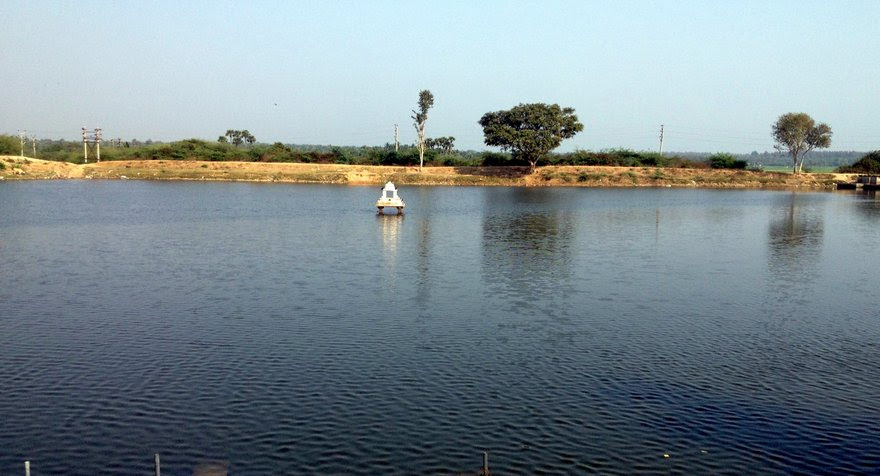
His Holiness Sri Ramanujacharya prayed for Lord Vishnu at this place in 11th century. The deity, facing East till then, turned towards West to bless Archarya (similar to Udupi temple in Karnataka). Hence there are two "dwaja stambhaas" (flag posts) in east and west directions. this is also the reason to permit devotees to enter the "garbha gruha" (sanctum sanctorum) for a closer darshan of the lord.
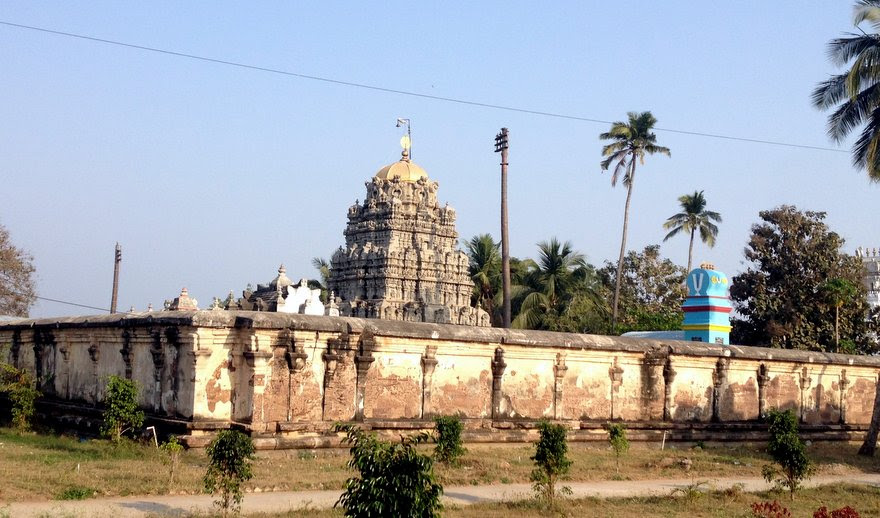
This temple is known for its marvellous sculpture, particularly on the southern entrance, apart from the 108 pillars, with none resembling each other, bear few inscriptions related to the royal lineages that existed in this area in the past. the unique stones on the floor in the pradakshina mandapam (circumambulatory passage) are said to infuse magnetic energy into the devotees through their feet.

The ancient mural paintings (frescoes) on these walls, made from natural colours, resemble those in ajanta – ellora caves.
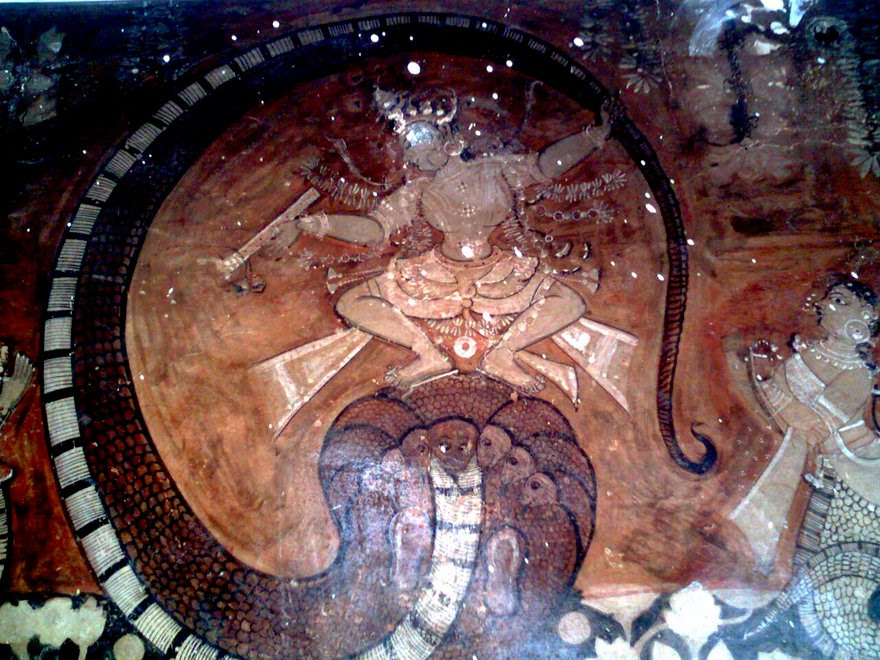
"Kaasi dwaram" – the under ground tunnel to varanasi in the north eastern corner of the pradakshina mandapam is another magnificent piece of ancient engineering skills. the entry is closed now, since many wild animals and snakes are entering the temple.
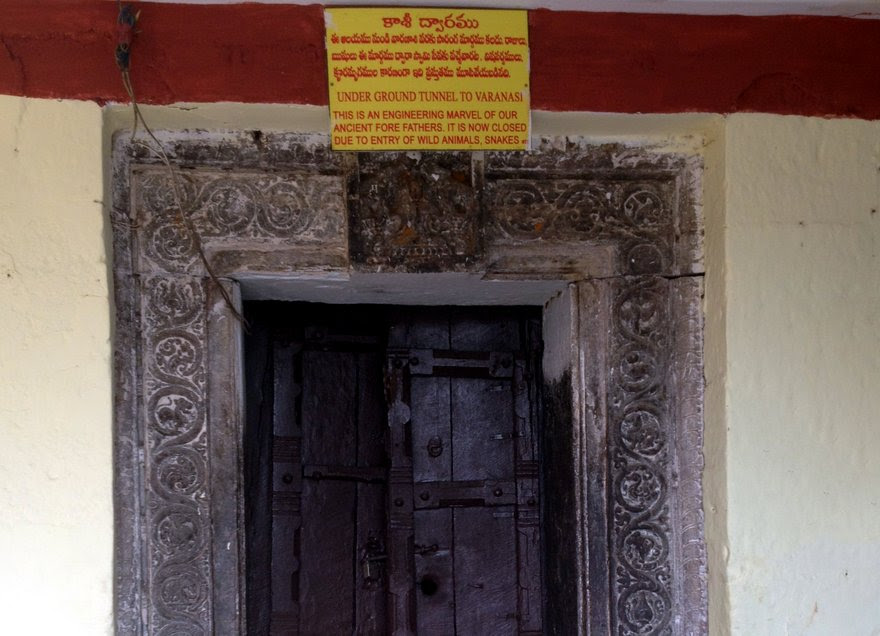
Tortoise park has been built to conserve the adult and young star tortoises, making Srikurmam the only conservation centre for this species.

Many great people and holy sages offered their prayers in this shrine including, lava & kusha (sons of sri raama, belonging to treta yuga – more than a million years ago) ., bala raama (elder brother of sri krishna, belonging to dwaapara yuga – more than 5000 years ago) ., sage durvaasa (more than 5000 years ago) ., sri adi sankaraachaarya (8th century ad) ., sri raamaanujaachaarya (11th century ad)., sri narahari teerthulu (13th century ad)., sri chaitanya mahaa prabhu(1512 ad) etc. sri kurmanadha is a great bestower of peace & bliss and is said to relieve the doshas related to saturn (sani graha doshas).
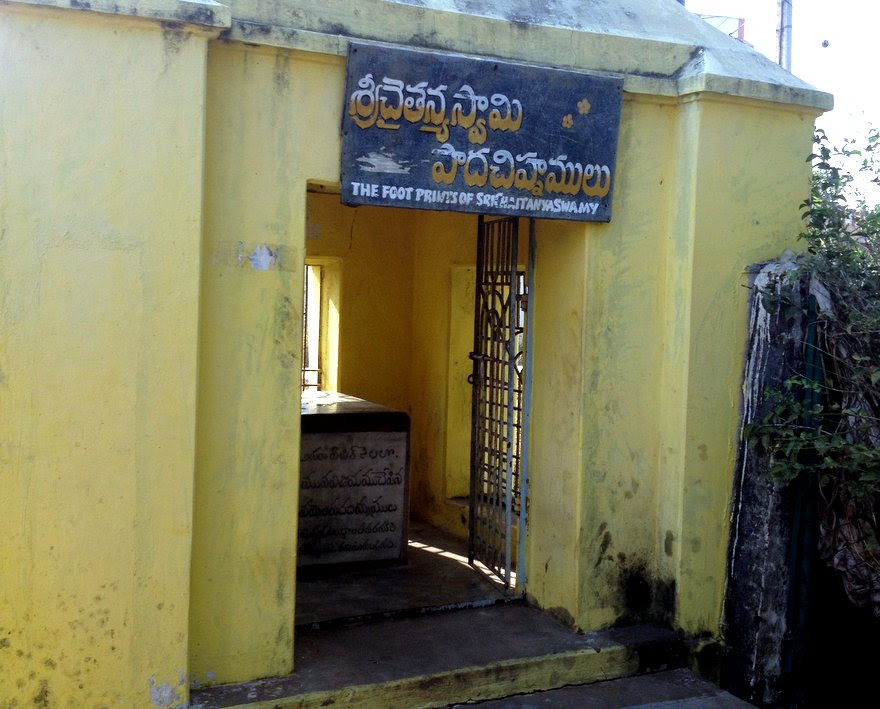
To protect this temple from the muslim invaders during 11th – 17th centuries, like in many temples in south india,the locals applied lime stone mix on the entire temple complex and camouflaged as a hillock. The solidified limestone layers are still being peeled off now , and the same are visible even today on the temple walls.

temples are the pivots of hindu culture. many of our fore fathers sacrificed their lives to protect these invaluable treasures for posterity. with only 3 of the 29 ancient civilizations remaining, and hinduism being one of them, the present generation has the inescapable responsibility to protect, if not further develop, and pass on to the next generations.

Most of the avatars of Lord Vishnu involve fighting against evil! But in this Kurma avatar his main purpose was to provide support and help. When in danger the Tortoise withdraws itself into its shell. This is nothing but the concept of withdrawing senses from sense objects and meditating on the lotus feet of the Lord.
In the second chapter of Bhagavad Gita Lord Krishna states:
yada samharate cayam
kurmo 'nganiva sarvasah
indriyanindriyarthebhyas
tasya prajna pratisthita
"One who is able to withdraw his senses from sense objects, as the tortoise draws his limbs within the shell, is to be understood as truly situated in knowledge."
Srikurmam – The Unique Temple of Lord Kurma the Tortoise Avatar
The most sacred and ancient shrine of Sri Kurmam, situated on the shores of bay of bengal, is the only swayambhu temple in the world where lord vishnu is worshipped in the form of Kurma Avataara (tortoise – the second incarnation of the famous dasa avataras).
Initially dedicated to Shiva and referred to as Kurmeswara temple, Ramanuja is said to have converted Srikurmam into a Vaishnavite temple in the 11th century AD. Since then, the temple was regarded as an important centre of Vaishnavism. This ancient shrine is believed to be prior to the golden era of sri raama (raama raajyam).

Prominent references about this shrine are available in Kurma, Vishnu, Agni, Padma, Brahmaanda puranas. while the shrine is said to be more than a few million years old, outer structures were reconstructed many a time – after dilapidation of previous one , and the latest temple structure of outer walls is more than 700 years old.

The legends runs as follows. There existed a mountain, Swetachala, which was ruled by the king Sutha. His wife being profoundly attached to the religious chores was to observe a vow (Vratham) on a Suddha Ekadasi day and shunned herself from the sensual pleasures. As the king made amorous advances to her on the very same day set for prayers and worship she reproached his advances and made a fervent appeal to Lord himself for the unhindered continuance of the Vratham which ought not be violated. In answer to her prayer, Lord Kurmanatha bade Ganges to flow in between the king and queen, thus segregating the couple and as a result the queen started living on the banks of the river, while the king was pining for his beloved in solitude. Sage Narada advised him to please Lord Vishnu by doing a penance at the confluence of river Vamsadhara and the sea. He taught Kurma-mantra to meditate upon. Pleased with his prayer, the Lord appeared before him with all his divine attributes such as Sanka, Chakra, Gadha and Padma. Lord Brahma, the creator of universe, himself officiated the celestial rituals and consecrated the shrine with gopaala yantra .

Sweta Pushkarini (the lake in front of the temple) is formed by the sudarshan chakra. sri mahaa laxmi (the consort of lord vishnu), emanated from this lake and is adored in the name of Sri Kurma Naayaki, in varadaa mudra posture seated on garuda vaahana.

The deity of Kurmanathaswamy is made of black stone, but due to regular applications of sandalwood paste, it appears yellow. It sits on a platform made of stone with a length of 5 feet, a height of 1 foot, and a width of 4 feet. The idol is 2.5 feet (0.76 m) long and consists of three stone structures. The stone representing the head faces the west; the middle stone represents the body of the tortoise the small stone at the rear end, covered with swirling circles, represents either the tail of the tortoise or the Sudarshana Chakra.

Sri Kurmam shrine is believed to be the "Moksha Sthaanam" and the Sweta Pushkarini has cosmic cleansing powers. so, like in varanasi, people perform the last rites of the deceased and drop (nimajjan) the asthikaas (ashes) in it, which eventually metamorphose into saalagraamaas (divine stones). even mother Ganga takes a bath in this lake every year on maagha shudha chavithi (around february) to cleanse herself of all the sins left by the devotees . the prasaadam of the lord is said to possess mystic curative powers – after taking this prasaadam, the celestial dancer "Tilottama" became devotional and renunciated desires., king Subhaanga won the war., a devotee by name Vaasu deva got leprosy cured.

His Holiness Sri Ramanujacharya prayed for Lord Vishnu at this place in 11th century. The deity, facing East till then, turned towards West to bless Archarya (similar to Udupi temple in Karnataka). Hence there are two "dwaja stambhaas" (flag posts) in east and west directions. this is also the reason to permit devotees to enter the "garbha gruha" (sanctum sanctorum) for a closer darshan of the lord.

This temple is known for its marvellous sculpture, particularly on the southern entrance, apart from the 108 pillars, with none resembling each other, bear few inscriptions related to the royal lineages that existed in this area in the past. the unique stones on the floor in the pradakshina mandapam (circumambulatory passage) are said to infuse magnetic energy into the devotees through their feet.

The ancient mural paintings (frescoes) on these walls, made from natural colours, resemble those in ajanta – ellora caves.

"Kaasi dwaram" – the under ground tunnel to varanasi in the north eastern corner of the pradakshina mandapam is another magnificent piece of ancient engineering skills. the entry is closed now, since many wild animals and snakes are entering the temple.

Tortoise park has been built to conserve the adult and young star tortoises, making Srikurmam the only conservation centre for this species.

Many great people and holy sages offered their prayers in this shrine including, lava & kusha (sons of sri raama, belonging to treta yuga – more than a million years ago) ., bala raama (elder brother of sri krishna, belonging to dwaapara yuga – more than 5000 years ago) ., sage durvaasa (more than 5000 years ago) ., sri adi sankaraachaarya (8th century ad) ., sri raamaanujaachaarya (11th century ad)., sri narahari teerthulu (13th century ad)., sri chaitanya mahaa prabhu(1512 ad) etc. sri kurmanadha is a great bestower of peace & bliss and is said to relieve the doshas related to saturn (sani graha doshas).

To protect this temple from the muslim invaders during 11th – 17th centuries, like in many temples in south india,the locals applied lime stone mix on the entire temple complex and camouflaged as a hillock. The solidified limestone layers are still being peeled off now , and the same are visible even today on the temple walls.

temples are the pivots of hindu culture. many of our fore fathers sacrificed their lives to protect these invaluable treasures for posterity. with only 3 of the 29 ancient civilizations remaining, and hinduism being one of them, the present generation has the inescapable responsibility to protect, if not further develop, and pass on to the next generations.

Most of the avatars of Lord Vishnu involve fighting against evil! But in this Kurma avatar his main purpose was to provide support and help. When in danger the Tortoise withdraws itself into its shell. This is nothing but the concept of withdrawing senses from sense objects and meditating on the lotus feet of the Lord.
In the second chapter of Bhagavad Gita Lord Krishna states:
yada samharate cayam
kurmo 'nganiva sarvasah
indriyanindriyarthebhyas
tasya prajna pratisthita
"One who is able to withdraw his senses from sense objects, as the tortoise draws his limbs within the shell, is to be understood as truly situated in knowledge."